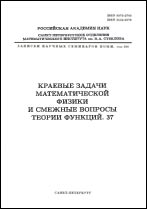|
|
Zapiski Nauchnykh Seminarov POMI, 2019, Volume 485, Pages 58–71
(Mi znsl6878)
|
 |
|
 |
This article is cited in 2 scientific papers (total in 2 papers)
Commutators of relative and unrelative elementary groups, revisited
N. Vavilova, Z. Zhangb
a St. Petersburg State University, St. Petersburg, Russia
b Beijing Institute of Technology, Beijing, China
Abstract:
Let $R$ be any associative ring with $1$, $n\ge 3$, and let $A,B$ be two-sided ideals of $R$. In the present paper we show that the mixed commutator subgroup $[E(n,R,A),E(n,R,B)]$ is generated as a group by the elements of the two following forms: 1) $z_{ij}(ab,c)$ and $z_{ij}(ba,c)$, 2) $[t_{ij}(a),t_{ji}(b)]$, where $1\le i\neq j\le n$, $a\in A$, $b\in B$, $c\in R$. Moreover, for the second type of generators, it suffices to fix one pair of indices $(i,j)$. This result is both stronger and more general than the previous results by Roozbeh Hazrat and the authors. In particular, it implies that for all associative rings one has the equality $\big[E(n,R,A),E(n,R,B)\big]=\big[E(n,A),E(n,B)\big]$ and many further corollaries can be derived for rings subject to commutativity conditions.
Key words and phrases:
general linear groups, elementary subgroups, congruence subgroups, standard commutator formula, unrelativised commutator formula, elementary generators.
Received: 16.10.2019
Citation:
N. Vavilov, Z. Zhang, “Commutators of relative and unrelative elementary groups, revisited”, Representation theory, dynamical systems, combinatorial methods. Part XXXI, Zap. Nauchn. Sem. POMI, 485, POMI, St. Petersburg, 2019, 58–71
Linking options:
https://www.mathnet.ru/eng/znsl6878 https://www.mathnet.ru/eng/znsl/v485/p58
|

| Statistics & downloads: |
| Abstract page: | 137 | | Full-text PDF : | 52 | | References: | 21 |
|




 Contact us:
Contact us: Terms of Use
Terms of Use
 Registration to the website
Registration to the website Logotypes
Logotypes








 Citation in format
Citation in format 
